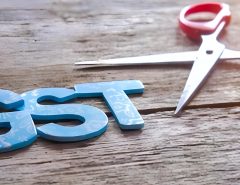The education sector received significant attention in the Union Budget 2025, which emphasized inclusivity, skill development, and innovation. The budget allocated ₹1,28,650.05 crore to education, a 6.22% rise from the prior year, demonstrating a dedication to reinforcing school education, broadening the reach of higher education institutions, and equipping India’s youth for new opportunities. School education was allocated ₹78,572.10 crore, while higher education received ₹50,077.95 crore. This financial commitment will fuel reforms, enhance infrastructure, and back skill-focused educational initiatives that correspond with the changing demands of the job market.
Making Education More Accessible
A major step towards making education more inclusive is the introduction of the Bharatiya Bhasha Pustak Scheme, which aims to provide digital versions of Indian language books for school and higher education. This initiative would make education more accessible and enhance understanding by allowing students to learn in their mother tongue. It is expected that academic publishers will take the lead in creating high-quality content in regional languages, ensuring that language is no longer seen as a barrier to learning.
Recognizing the value of India’s ancient knowledge heritage, the government has also launched the Gyan Bharatam Mission, a large-scale effort to survey, document, and conserve over one crore manuscripts. This initiative, involving academic institutions, museums, libraries, and private collectors, will help preserve India’s vast intellectual heritage. A National Digital Repository is to be created that would enable knowledge sharing and provide access to these resources to scholars, researchers, and students. This interesting initiative is likely to drive renewed interests in lost texts, spur translations, invite modern interpretations, and cast open new vistas in academics, digital publishing, and niche publishing.
Bridging the Gap between Education and Industry
The budget has laid much emphasis on making education industry-relevant. A total of 10,000 fellowships will be offered under the PM Research Fellowship Scheme in the next five years for research and technological development with a budget of ₹20,000 crores. Further, five National Centres of Excellence for skilling are going to be set up, to equip youth with the skills required for “Make for India, Make for the World” manufacturing.
Artificial
Intelligence has been another major area of focus, with a dedicated Centre of
Excellence in AI for Education set to receive ₹500 crore. The integration of AI
into education will not only enhance learning experiences but also equip
students with the skills needed for a rapidly evolving job market.
Strengthening Digital Infrastructure in Schools
To bridge the digital divide, the Bharat Net Project shall see that all government secondary schools get broadband access. It is set to provide significant changes in education for the rural areas, such as equal access to digital resources and online learning tools. The government has also announced plans to set up 50,000 Atal Tinkering Labs in government schools in the next five years. These labs will nurture curiosity and encourage the budding scientists, technologists, and innovators from an early stage.
Expanding Educational Institutions
Higher education is poised to grow significantly, especially with the growth of IITs and medical institutions. In the last ten years, the intake into IITs has grown more than double, from 65,000 to 1.35 lakh, and there are plans to add another 6,500 seats. The medical sector has also experienced significant growth with more than 1.1 lakh new seats introduced over the last ten years in graduate and postgraduate medical programs. With another 10,000 added in the upcoming phase, India will be well on its way to strengthening the health force of the nation.
Addressing the Cost of Education
The budget provides a firm ground, but doubts still linger on the affordability of education, especially for the lower-income groups. Many people believe that education expenses for all students on the Below Poverty Line (BPL) and Low-Income Group (LIG) must be treated GST-free. Making higher education, job-oriented training programs, and preparatory courses free for such students will bring education within the reach of the needy.
At present, online and higher education services are subject to an 18% GST, which many argue is too high, especially when compared to other nations. A reduction in GST could make skilling and higher education more affordable, encouraging more students to pursue specialized learning.
Additionally, student loans are very expensive, and many aspiring learners are still being kept out. There is a huge demand for interest-free loans or at least lower interest rates for economically disadvantaged students. In the context of India’s target of achieving 50% GER in higher education by 2035, such financial considerations will be crucial in making education truly inclusive.
A Step towards a Viksit Bharat
The Union Budget for 2025 has undoubtedly taken definitive action towards enhancing teaching, learning, and innovation to empower India’s youth for the future. Through additional access to local language education, strengthening digital infrastructure, and training that matches industry needs, the budget creates the foundation for an inclusive and future-proof labour force. Further investment and innovative changes will position India’s education sector as an important contributor to the future of India’s development over the next few years.





Leave a Reply